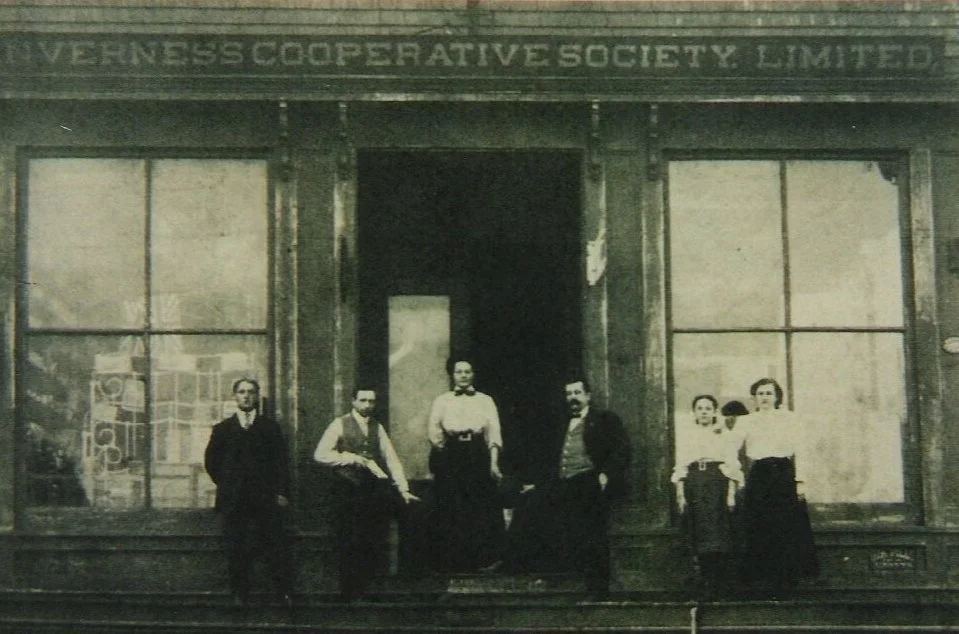Ernest Samuel Hatt: Inverness’ Chronicler
Hatt’s extensive body of work perfectly captured the landscape of the area during the coal mining boom.
Pictured: Inverness Imperial Band, circa. 1920s
As we scramble through Inverness County we come across communities and people who bring us back to an era that reminds us of a slower pace and within historical confines, where history is a breathing, essential life essence. In Inverness, this essence is the photography of Ernest Samuel Hatt who was born in Mill Village, Guysborough County on May 8, 1875. He recorded Inverness as it grew up, the evolution of the buildings, the school children, the social climate, the group of miners, the churches, and the general building of a thriving community that was to become a mosaic of Canada with immigrants from Scotland, Ireland, Russia, Belgium England, France, and the United States. I am quite sure there are many homes that have a Ernest Samuel Hatt original that is stashed away with the owners not knowing what they possess. They are not valuable financially but they are historically. He travelled extensively on the Judique Flyer from Hastings to Inverness and by horse and buggy to the Margarees. Everything was his pallette and everyone was his subject.
Ernest Hatt’s father, Joseph was a lumberman, and his mother, Lavinia was of Dutch origin. When our subject Ernest married, he was 29 and he is listed as a photographer. His wife, Eva May McIntosh was 22 at the time on July 12, 1904 in Cumberland County. He died January 14, 1950, in Scothchtown after living there for 10 years and is buried in Union Grove Cemetery with Rev M.A. MacMillan officiating at the graveside.
His studio was the County but his base is where the present-day N.S. Liquor Store is located on Central Avenue. This is where his clientele would disembark from their horse and buggie to be captured by Hatt. Baby christenings, weddings, soldiers, miners, and ordinary people doing their job. In Mabou, he photographed Fred and William Hunts' store in the village. It stood as an icon for many years serving the people of Mabou through thick and thin. This photograph dates c. 1930s [photo 1}. As Inverness grew its workforce had to follow suite.
Photo #1 – Fred & William Hunt’s Store, Mabou
Businesses that followed a busy, developing industry. Americans, Russians, Belgians, Scottish, Irish, French, etc. all living together and working in the same industry. As the community grew some talented folks arrived and they banned together to form marching bands for the entertainment of the locals. They played and practiced in the bandshell - situated between the Inverness Lodge and the town hall. They were in great demand for parades and weekend dances.
Photo #3 – Inverness Imperial Band
One such brass band was The Inverness Imperial Band, photo #3, which comprised of community members and was quite popular. Of course, our photographer, Hatt, had to survive financially, so he made copies of his photos and sold them to anyone who wanted a copy. The larger the group the larger the profit. That concept has not changed. Ernest Hatt lived on MacIsaac St. behind the Coal Miners Café and below the yellow bungalow.
Photo #4 – Central Avenue, Inverness 1904
The town grew with a variety of businesses and this development can be seen in this photo #4 of Main Street with the businesses spread from one end of town to the other. The Inverness Restaurant, The Haddad Restaurant and Bakery, Archie Campbells 5 and Dime, John Beatons Furniture Store, The Pool Room, The Queen Hotel, The Grand Central, The Imperial along with the other 86 businesses that dotted the community.
Photo #5 – Inverness Cooperative Society Limited
In photo #5 Hatt captured the Inverness Cooperative Society Limited staff dated 1923 that was situated on Central Ave. and served the community and catered to mostly purchasing from the local farmers and was becoming a thriving business.
As one elderly gentleman from Mabou recalled that Mr. Hatt would arrive by a small boat or of the train with his big camera and make way to his destination. On one occasion the subject was the workers at the lobster cannery, which is probably the only group photograph of this group of workers. His subjects ranged from children to firefighters and from families to weddings.
Prior to his move to Scotchtown in 1940, his studio burned down in Inverness so he packed up the remnants and set out on another adventure. Ten years later he died and his wife moved back home to Guysborough County. At the age of 74, Ernest Samuel Hatt passed but left a rich legacy of photography behind for the next generation to enjoy. Drop into the museum for a visit and check out the photos of Hatt or better yet check through the old family albums and if you find a Hatt photo on cardboard consider donating it to the Hatt collection at the Museum for everyone to enjoy. We are opened seasonally Monday to Friday 8 to 5. We look forward to your visit.





